Diverse gastronomic culture
Spanish gastronomic tradition has been progressively enriched by the influence of the towns and cities that conquered her landscape, and by the foreign lands and territories they would later come to conquer. The influence of Arabic culture contributed to a great variety of fruits and vegetables, while it was Spain that introduced products from the America to the rest of Europe; such as potatoes, tomatoes, cocoa and pepper, which over time have been modified to the eating habits of every country.
Spain
has developed a great variety of culinary techniques that are
characterized by richness and a variety of products that maintain a
perfect balance between flavor and health. Recipes are based on rich
Spanish products selected for their high quality, like Iberian ham,
olive oil, wine and cheese, which all characterize the Mediterranean
diet. The modern Spanish kitchen is enriched by the interexchange of
different cultures among Spain’s own regions that comprise the Iberian
Peninsula, where two realities coexist: classic cooking based on
tradition and heritage, a contemporary cooking that utilizes the most
modern and innovative techniques.
Spanish’s gastronomy experienced a resurgence of popularity came to be internationally famous from the start of the 19th century. This fact is due to the appearance of great professionals that knew how to reinvent traditional recipes and dishes in harmony with modern times, providing Spanish cuisine with a new dimension of presence and flavor. Chefs who have achieved this level of international prestige include; Juan María Arzak who introduced the force of Basque cuisine; Ferran Adrià, who introduced foam and the use of liquid nitrogen; Martín Berasategui, considered to be the most known representative of new Basque cuisine; and the departed Santi Santamaría, who received three Michelin stars in his restaurant San Celoni. The art of these chefs, bringing together all of these innovative ideas, is what has made this culinary phenomenon possible. Gastronomy, as much in China as in Spain is an art form and an experience to enjoy life, to share and to savor with friends.
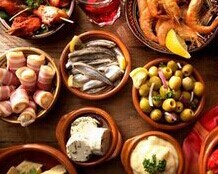

Wide range of products
Spanish drink
Wine to Spain is like Whisky to Scotland, and Vodka to Russia. Spanish wine has been crafted by time and perfected by man; as it is much a part of Spanish culture as the sounds of flamenco. Wine is the essence of all that is Spanish; the deep seeded union between passion, pleasure and community.
Wine has been around for thousands of years and is an integral part of Spanish culture and identity. As history has developed over the years so has Spanish wine. Therefore to fully understand Spanish wines one must travel back in time and become witness of the evolution of this cultural artifact, in order to truly appreciate all that it has to offer.
The rich and diverse history of the Spanish wine can differentiate itself from “new winemakers or vintners around the world” as having evolved from centuries of wine making tradition, as opposed to modern industrialized vineyards. Like wine, Spanish enology and viticulture have been getting better with time. This has allowed the harmonious union of both tradition and modern innovation in the Spanish winemaking process. Spain has been making wine long before Australia, Chile, South Africa and the United States were even discovered; which only adds to its quality and prestige.
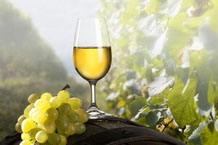

Brandy
Brandy is a spirit that contains between 36 and 45 degrees of alcohol derived from distilled spirits and wine, and aged in oak barrels.
Spirits are know to those drinks that are composed of a volume exceeding 15% alcohol and are obtained by distilling fermented various natural products of agricultural origin.
Distillation is a completely natural process of separation (heat and cold) of specific of wine. The process requires technical know-how to achieve evaporation of the best characteristics of wines, which make up the aroma and taste of them.
Brandy can be aged in 3 different ways:
Without aging: many types of Brandy and fruit pulp are not aged after distillation. The resulting product is usually a clear liquid. With low density.
In barrel: the Brandy which has a golden or brown color was aged in oak barrels.
Solera process: some types on Brandy are aged using hatchery systems and sills. In Spain we usually use this method.
• Solera: at least six months to a year on average
• Reserva: at least one year
• Gran Solera: minimum three years.
There are four main subtypes of grape Brandy:
- Brandy de Jerez, made in Spain from Jerez wine. In other Spanish regions and from other grape are also produced remarkable brandies.
- Cognac, which comes from the French region with the same name. This type is double distilled using pot stills.
- Armagnac, made from grapes of the region in southwestern France called the same (Gers, Landes, Lot-et-Garonne). Their process is simple distillation in copper stills and then aged in oak casks from Gascony or Limousin. Armagnac is the first distilled spirit in France. It is aged more than cognac, usually 12 to 20 years, or even over 30 years.
- The grape brandy United States, mostly from California, is lighter but stronger flavor than European.
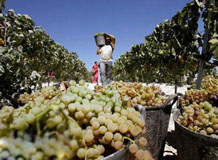
Olive oil
Nevertheless, until a few years ago, Spanish olive oil was relatively unknown since almost all of it was sold by bulk and packaged outside the country. Today, gradually, oil producers, and especially those of the best quality oil, are packaging and placing their own names on the bottles, just as the producers of California wine are now selling more and more of their wine as their own product instead of selling the grapes. This is increasing considerably the knowledge and admiration for Spanish olive oil as an exceptional product
Finally, the benefits of olive oil should be mentioned: through its oleic acid, it helps to reduce the level of bad cholesterol and increase the level of good cholesterol; it has a high contribution of Vitamin E, which prevents arteriosclerosis, and helps to reduce blood pressure, thereby helping to prevent thrombosis.
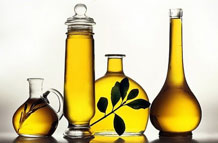
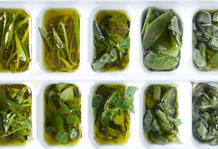
Ham
Ham is the generic name of the product derived from the pork hind leg, salting raw and cured naturally. The pig front legs, despite having an identical process of development, are known as “paleta” or “paletilla”. The two most famous varieties of ham are cured ham from Spain (Iberian ham or Serrano ham) and the Italian Prosciutto.
There are several elaborations and origin designations of the ham but, in general terms, there are two types of ham as the breed of the pig from which it comes, is the Iberian Pig (Iberian ham) or some variety of white pigs (“ham” or “Serrano ham”).
Iberian ham distinguishes itself by his texture, aroma and flavor unique and distinguishable. The taste can vary depending on how many acorn the pig has ate and the exercise he as done. Their official classification is usually based on the amount of acorn that they have eaten before sacrifice.
The main features that distinguish the quality of Iberian ham derived from:
The breed animal purity
The extensive farming in freedom of Iberian pig in wooded pastures where they can move
The feed
The ham cure, which usually lasts between 8 to 36 months.
Serrano Ham or white ham comes from a variety of white pig breed, and the ham is easily distinguished by the skin leg color. It is called Serrano when it is cured in mountain climate, cold and dry. It is currently regulated by the Community Rules which defines the process characteristics and the finished product.
The Serrano ham differences three grades according to their healing:
Bodega ham; cured from 9 to 12 months
Reserva ham: cured from 12 to 15 months
Gran Reserva ham: cured from 15 months
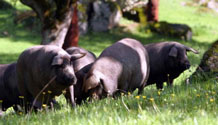
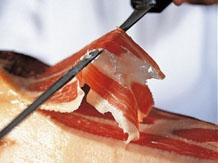

Canned Seafood
Preserved are process results of handling food. This allows keeping and preserving it in good conditions, without changing sanitary conditions, and during a long period of time.
Before discovered this system preserved, there were other methods that kept the food properties. These could be kept in dry and dark places, wrapped in protective substances like sugar to keep fruits and vegetables, use vinegar, oil, honey, salt, eic, etc. to keep, and also could get smoked and salted products.
In 1803, Nicolas Appert discovered a method for preserved food through the heat in sealed glass containers. A few years later, peter Durand introduced the tin can as a preservation method, which was stronger, flexible and lighter. This new type of packaging was very successful, leading to revolutionize the U.S system and extending to the present.
The canned vision in Spain is very different in other countries. Abroad it is perceived as lack of ability to cook recipes, but in Spain do not replace the recipes, but they are food concepts from the national gastronomy. An example is the mussels in “escabeche”, “ventrisca de bonito” in olive oil, “berenjenas en vinagre”, etc. which don´t have culinary equivalent and are gastronomic products in itself. Therefore, in Spain is canned the best in their fields and seas.
The Galician coast is the richest in marine resources and is located in the northwest corner of the Iberian Peninsula. Since Roman times, Galicia has had a close relationship with the sea and their resources use, adapting and developing the socio-economic changes. It is characterized by the cold Atlantic Ocean influence, which is essential for a quality product. The local fishermen use different technique to those used in other regions; they go further into the sea and appeal to less destructive systems to achieve the highest quality product. These products can be found in these farthest areas are octopus, hake and “bonito del norte”, among others.

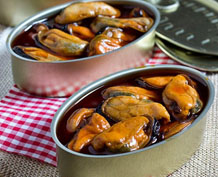
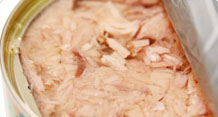
Canned vegetables
Spain has been the master for years at preserving delicious, healthy meals in jars or cans. If you’re not sure what to prepare for dinner, one of these selections will be a great alternative to cooking.
Food conservation has always been a prime concern for mankind. In Spain, before the development of the food preservation industry in the middle of the 19th century, the most widely-used methods were salting,and immersion in animal fats, olive oil or vinegar. In Spain, the first vegetable canning plant was in La Rioja in the 1840s.
Food preservation is now a well-developed sector in Spain and one that enjoys great prestige. Canned products of all types are enormously popular and many are considered gourmet class. Spaniards preserve a wide range of products in cans and glass jars, often using nothing but the best for this purpose, such as prime vegetables, pulses and fruits picked from Spain’s excellent market gardens and orchards.
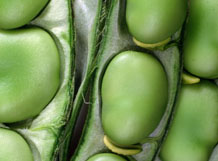

Almomds
Spain is the world's second largest producer of almonds, which grow all over the Spanish Mediterranean regions - in Catalonia, Valencia, Murcia, the Balearic Islands, Andalusia, and Aragón.
Spain also has a long-established tradition in almond exports. It was the Spanish colonizers who first took almonds to the American continent after the discovery of the New World. Today, Spain is the world's second largest exporter, with most almond exports going to the European Union, the world's top consumer.
Unlike the almonds from other larger producer countries, the varieties grown in Spain mostly have a hard shell, with a smaller nut than the soft-shelled varieties and a higher oleic acid content. Most cultivation is on small, dryfarmed orchards which are less productive than extensive, irrigated orchards. But Spanish almonds are of outstanding quality because of their high oil content which makes them moister and more flavorsome.
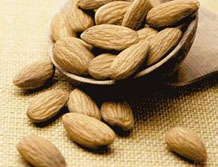
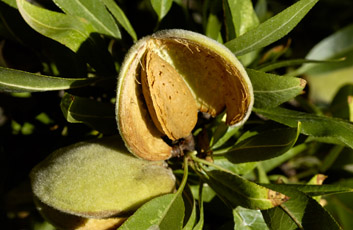
Honey
Honey is a healthy, nutritive food containing mineral salts, vitamins, trace elements, enzymes, organic acids and proteins. It is tremendously varied, as its flavor, color, appearance and nutritional value can vary from one hive to another. In Spain there are multi-flower honeys when the nectar comes from different sources, and single-flower honeys, from a single plant species.
In northern Spain, the province of Asturias is also a culinary paradise. These fertile lands make the place ideal for growing chestnut trees, oak trees and all sorts of flowers suited for honey.

Salt
Sea salt is mentioned in the Vinaya Pitaka, a Buddhist scripture compiled in the mid-5th century BC. The principle of production is evaporation of the water from the sea brine. In warm and dry climates this may be accomplished entirely by using solar energy, but in other climates fuel sources have been used. Modern sea salt production is almost entirely found in Mediterranean and other warm, dry climates. Sea salt is salt produced from the evaporation of seawater. It is used in cooking and cosmetics. It is also called bay salt or solar salt. Like mineral salt, production of sea salt has been dated to prehistoric times.
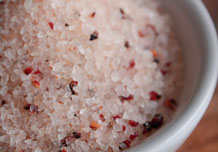




|
沪ICP备10034106号-1 |